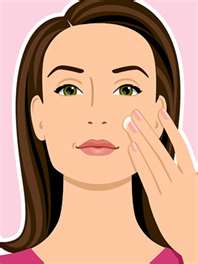Someone who has both sensitive skin and suffers from acne faces a dilemma when it comes to finding effective anti-acne treatments since most anti-acne products can be quite harsh on the skin. So what options does someone have who needs a soothing, yet effective acne treatments?
Two of the most effective ingredients for treating acne are salicylic acid and benzoyl peroxide both of which can be quite drying on the skin. Depending on how severe your acne is, for instance if you just have a few breakouts at a time or just clogged pores, using one of these ingredients but not the other would work for you. Now anti-acne ingredients can be sensitizing and make your skin sting or turn red, but for most people these side effects are temporary. Once your skin gets used to the products those side effects go away. Keep in mind that if the redness, stinging, and uncomfortable dryness continues for a prolonged period, months for example, than you definitely have to modify your routine.
I am a strong believer in using salicylic acid cleansers for acne prone skin since salicylic acid unclogs pores, helping to prevent breakouts, reduces inflammation, and keeping your skin smooth. One way to use a salicylic acid cleanser is to have it on hand to use a few times a week instead of every day. Or if your skin can handle it try using the salicylic acid cleanser in the evening and a gentle cleanser in the morning. Additionally, another way to try salicylic acid is with a lotion like Paula’s Choice Exfoliating 1% BHA Lotion. Depending on how your skin reacts you could use the lotion a few times a week.
As for benzoyl peroxide there a few ways to use it. First off try using the lowest possible dosage you can find like Neutrogena’s On the Spot Lotion which is 2.5% benzoyl peroxide. If even that is too irritating try building up your use of benzoyl peroxide by applying your benzoyl peroxide product of choice for 15 minutes in the evening after cleansing. Then wipe off the product. Do this for a few nights, and then build up to using benzoyl peroxide for two hours before wiping it off for three nights. If you find you can tolerate the benzoyl peroxide after the third night then try using it overnight.
Make sure you have a soothing moisturizer on hand in order to help calm any irritation. Since you are acne prone don’t go for a super heavy product instead look for products that are labeled “oil free”, “won’t clog pores”, and “non-comedegenic”. Hyaluronic acid moisturizers are a good choice people with oily skin since they tend to be light.
If salicylic acid and benzoyl peroxide are too irritating for your sensitive skin look for ingredients like tea tree oil and sulfur to treat your breakouts with hopefully less irritation. Ingredients to look for that sooth and reduce inflammation include aloe vera, chamomile, cucumber, green tea, feverfew, colloidal oatmeal, allantoin, and zinc. Look for these ingredients in cleansers and moisturizers. Since you always need to use sunscreen your sensitive skin may benefit from a mineral sunscreen, a sunscreen whose main ingredients are titanium dioxide and/or zinc oxide, as opposed to a chemical sunscreen.
If your acne is persistent and your skin can tolerate it consider using an OTC retinol. OTC retinol causes less irritation than prescription Retin-As. There are also gentle prescription Retin-A formulations like Refissa that some people with sensitive skin may be able to tolerate without much irritation or with minimal irritation when you first use them.
Lastly, avoid using steam on your face or a hot washcloth. Even put ice on your face is not a good idea since rapid temperature changes will just cause you more inflammation which is something people prone to blemishes never want.
There are products out there meant for sensitive skin, aging skin with acne, and sensitive skin with acne. They are worth considering trying. If you can get your hands on samples before purchasing an entire product that is the way to go.
Most of all – don’t give up! It might take some time to find the right balance of products and ingredients to treat your sensitive, acne prone skin, but you will succeed in the end.
Sources and Further Reading:
- The Skin Type Solution by Dr. Leslie Baumann – pages 47-65
- The Clear Difference by Laura Cooksey – Skin Deep Magazine September/October 2011 issue
- Simple Skin Beauty by Ellen Marmur, MD – page 75
- For general tips on caring for sensitive skin please see – The Best Soothing Ingredients for “Sensitive” Skin – The Skin Type Solutions Library – Tips Section












Recent Comments